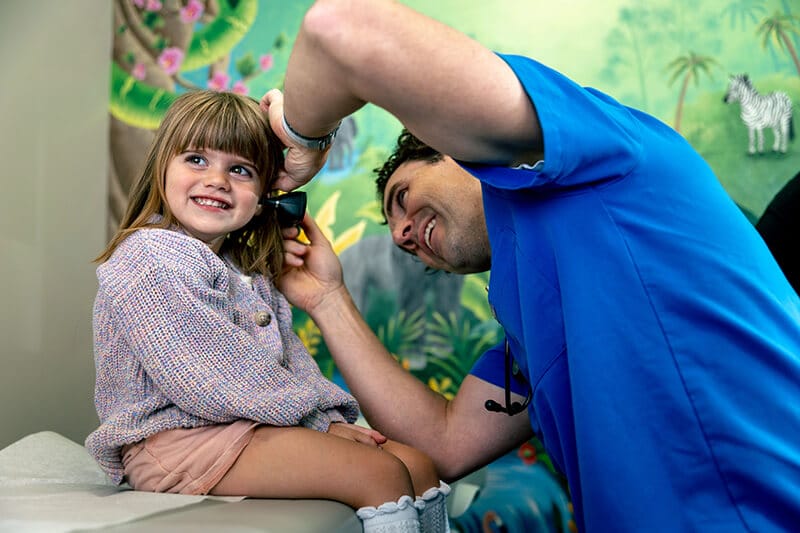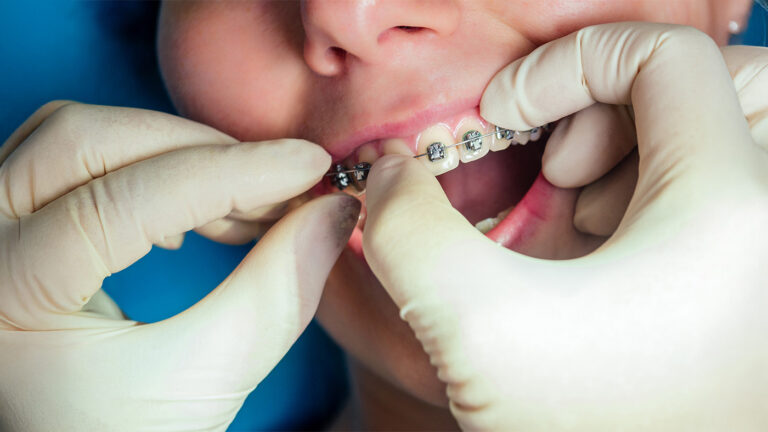Braces aren’t just for kids and teens. Whether you’re finally fixing something you’ve been dealing with all your life or your teeth have drifted in recent years, braces are more popular than ever among adult patients. In fact, according to the American Association of Orthodontics, one in three orthodontic patients are adults.
There are plenty of reasons to get braces in adulthood. Braces not only improve your smile, they also improve your dental health. Well-aligned teeth give you a prettier smile and help build confidence (which is nothing to scoff at), but they also help you speak more clearly and chew more efficiently. Straight teeth have a reduced risk of uneven tooth wear, cavities, tooth decay, and gum disease.
How long do braces take for adult patients?
It’s one of the first questions most people ask about their braces, right after they ask if they’re going to hurt: “How long will my braces take?” The answer is complicated and differs from person to person. We can talk about averages and what you are likely to experience, but everyone’s treatment is unique.
At your consultation, the orthodontist can estimate how long your treatment plan will take. Things may move more quickly or more slowly than you expect once treatment actually begins. Your orthodontist will consider your dental history (including fillings, crowns, spacing, missing teeth, and dental disease), medications, lifestyle habits, and other factors when planning your treatment. Certain medications and habits (like smoking) may impact your treatment time.
Treatment timelines for both kids and adults usually take between 12 and 24 months, depending on their specific orthodontic issue (known as a malocclusion) and other factors. Treatment timelines for adults are comparable, but can take a little bit longer.
As an adult patient, you have some factors working in your favor and a few working against you. Because you’re older, your jawbone is denser and harder to move through. You’ll probably encounter a few stubborn teeth, and it will take longer to move them than it would have taken a child with a still-developing jawbone.
On the upside, adult patients are typically better at sticking to the treatment plan. Ultimately, it comes down to what you’re trying to achieve with your smile and how well you adhere to the treatment plan. Age is only one factor. In general, adult patients with mildly crooked or misaligned teeth will wear braces for approximately one year. If you have a more complex malocclusion, treatment may take 18 to 36 months.
What factors affect orthodontic treatment timelines?
Four major factors impact how long you’ll have to wear braces: age, complexity, compliance, and type.
Age
In general, with everything else being equal, orthodontic treatment takes a little longer in adult patients than in children or teens. Adolescent jaws are still growing, and everything is moving around already as their bodies grow and develop. As a result, adolescent teeth are much more receptive to adjustment with orthodontic appliances.
By contrast, the teeth and jaws of an adult have been in the mature configuration for some time. They are more set in their ways and a little harder to maneuver. Adult bone is typically denser, so it’s harder to get your teeth to budge. It can add a few extra months to your treatment plan when compared with a younger patient.
Complexity
This is probably the most important factor in figuring out how long you’ll be wearing braces. Something relatively simple, such as a few crooked teeth, can usually be adjusted within a few months to a year, while more complex malocclusions may require a few years.
Compliance
Most orthodontic appliances require regular adjustments to keep your teeth moving in the correct direction. You’ll visit the orthodontist every six to eight weeks throughout treatment for examinations and adjustments. If you frequently miss or delay appointments, your treatment will take longer to complete. In the meantime, make sure you keep up on regular brushing and flossing. And call the team at Families First Pediatrics right away if you experience an orthodontic emergency.
Type
All orthodontic appliances are designed to gradually shift your teeth into the desired position, but some can do the job a little more efficiently than others.
The most common type of appliance is conventional braces, made of stainless steel brackets, archwires, and elastics. The brackets are attached to your teeth with an orthodontic adhesive, connected with an archwire, and customized with elastic bands. They move your teeth more efficiently than other appliances, and are the standard appliance for most orthodontic treatment plans.
Ceramic brackets are nearly as effective, but they can’t handle as much pressure and may slightly delay your treatment. On the upside, they are made of materials that match your tooth color, making them less noticeable than metal brackets.
Clear aligners, such as Invisalign, are also a popular option due to their nearly invisible design and flexibility. Clear aligners are removed for eating, brushing, and flossing, which is a huge convenience. But anytime you’re not wearing your aligners, they aren’t doing the good work of moving your teeth into place.
Each type of orthodontic appliance comes with its own pros and cons. You’ll work together with your orthodontist to determine which appliance is most suitable for your situation.
Are adult braces worth the time and investment?
Braces are a long-term investment in your dental health and self-esteem, regardless of your age. Orthodontic technologies have improved considerably in recent years, offering some of the best results and more treatment options than ever.
The best way to find out what your treatment will look like is to schedule a free consultation with the team at Families First Pediatric Dentistry and Orthodontics. We can answer all of your questions, discuss options, design a personalized treatment plan for you, estimate timelines, and guide you through every step of the process. It’s never too late to get the smile you deserve! With Families First Perks, braces are more affordable than ever for our Families First Pediatric families.




